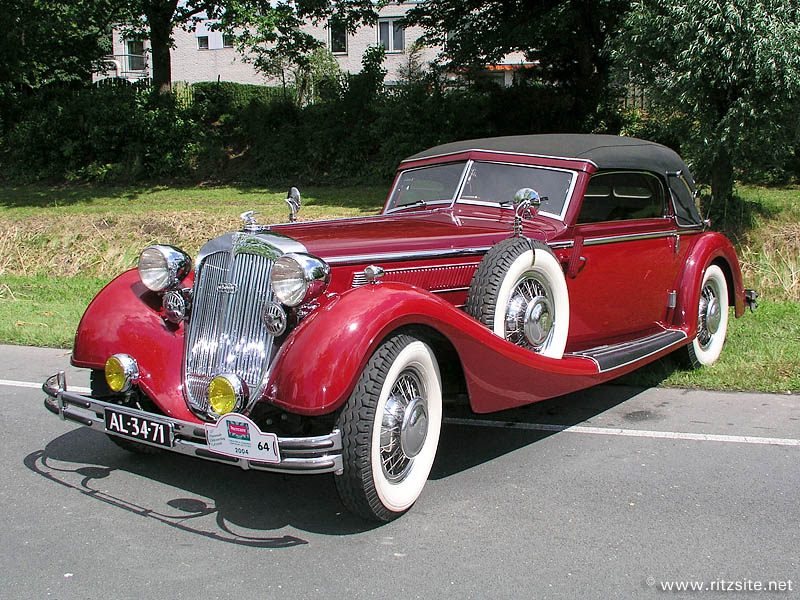|

Horch 853 - sport-cabriolet body - manufactured in 1937
Germany has a great tradition in building luxury cars. In the decade before the second World War there were two makes which competed each other as Germany's most popular luxury car manufacturer: Mercedes-Benz and Horch. Mercedes offered a more elaborate model range than Horch, but Horch countered that with appealing styling. Ultimately Mercedes seems to be the winner of this competition, still being in business as a very successful car manufacturer to this day, while the Horch name is almost forgotten, but that's not quite true.
The Horch marque was part of the Auto Union concern, a company established in 1932 by combining the Audi, Horch, DKW and Wanderer factories. Each make catered more or less to a specific part of the car market; with DKW covering the lower segments, Audi and Wanderer the middle class and Horch directly positioned to make its mark in the top segment of the market. This concept worked quite well and the Auto-Union concern thrived. The success and ambitions of the concern were conveyed by the opulent Horch cars, which were big sturdy cars with often dramatic looking bodywork showing the finest workmanship.
Eight-cylinder cars were the mainstay of Horch, but also extremely expensive twelve-cylinder cars were offered from 1931 till 1934, just when the world was in an economic crisis. In 1935 this engine was replaced by a less elaborate 5-liter 8-cylinder in-line unit which at first produced 100 hp and later on 120 hp, about the same as the 6-liter V12 had offered. On this (85x) chassis some of the most beautiful bodies of the era were fitted, featuring long flowing lines and lots of chrome just oozing wealth and luxury. Especially the roadster and the sport-cabriolet bodies (as depicted here) found much acclaim.
In contrast to their looks these Horchs weren't very dynamic to drive. Though the chassis was fitted with independent front suspension and semi-independent rear suspension (De Dion axle) the road holding was tricky at higher speeds and also getting to these higher speeds took some time as a result of the massive weight of the cars (2400 to 2810 kg depending on the type of bodywork). Also the manoeuvrability of these cars proved quite a challenge to the driver, at a length of almost 6 metres and a width of 1.8 metres it needed a turning circle of 14 to 16 metres. For the daring however a top speed of some 135 kph was available, thanks to an elaborate transmission fitted with an overdrive gear system particularly suited for the German Autobahn.
In general the Horch 5-litre models were most appreciated at leisurely cruising speeds, preferably on boulevards and alike, so that their owners could enjoy the attention and admiration their cars evoked. Therefore it was a popular choice for public figures like movie stars and entertainers and also, in its Pullman-limousine form, for company directors and army officers. Illustrating this popularity is the fact that in 1938 55% of the cars sold in Germany with a displacement of over 4 litres were made by Horch.
Soon after the end of the second World War the production of Horch cars ceased. For the most part this was a result of the Horch factory now being located in the Russian controlled part of Germany. But also the tarnished image of the marque caused by the frequent use of its characteristic cars by the despised army of Hitler-Germany played a role. The Auto Union however continued in Western-Germany, concentrating on DKW cars. In 1969 Auto Union became part of the Volkswagen concern and its cars were fitted with the revived Audi badge. Within the Volkswagen concern Audi became responsible for producing cars for the higher segments of the market. And now there are even some rumours that the Horch name may be revived for the top-class cars produced by Audi. So maybe the competition between Mercedes and Horch isn't over just yet...
© André Ritzinger, Amsterdam, Holland
|
